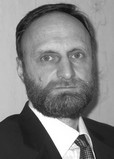Comparative Analysis of Physical Development and Physical Fitness of Students of Different Ethnic Groups in Central Russia
Фотографии:
ˑ:
PhD, Associate Professor V.Ya. Zhigalo1
Dr. Biol., Professor F.B. Litvin2
PhD, Associate Professor T.A. Bulavkina1
PhD, Associate Professor I.A. Dubogryzova1
PhD, Associate Professor O.N. Shkityr3
1Bryansk State of Engineering and Technology University, Bryansk
2Smolensk State Academy of Physical Culture, Sports and Tourism, Smolensk
3Bryansk State University named after Ivan G. Petrovsky, Bryansk
Objective of the study was to identify the levels of physical development and physical fitness of the 18-25 year-old students trained in different climatic geographic conditions.
Methods and structure of the study. The body component composition was determined using the impedance method. The level of physical development was evaluated based on the generally accepted parameters. The physical fitness rates were determined in the "field" tests.
Results of the study. The study showed that it is the Africans who have the greatest tension of chronoadaptation. They differ by the statistically significantly low body mass rates, low free and visceral fat mass rates, and high free water contents. Their physical development is characterized by the statistically low rates of body length, wrist dynamometry, chest circumferences at inhalation and exhalation, as well as low strength rates of physique with regard to EI. As opposed to the Slavs and Asians, the Africans have the weakest strength, speed-strength and coordination abilities. The Asians are distinguished by the significantly high muscle mass rates, visceral fat mass rates, and EI. The Slavs have the highest rates in terms of body length, free fat contents, left and right hand dynamometry, EI, as well as the strongest strength, speed-strength and coordination abilities.
Conclusion. In the Slavs and Asians, the average body mass rate does not differ statistically significantly. Secular changes in the somatic status of young males residing in different areas vary due to the effects of environmental factors.
Keywords: ethnic group, students' body composition, physical development, physical fitness.
References
- Aghajanyan N.A., Radysh I.V., Ignatyev L.I. Sezonnye izmeneniya adaptatsionnyih reaktsiy organizma [Seasonal changes in body's adaptive reactions]. Vestnik RUDN, ser. «Meditsina», 2012. no.7. pp. 2627.
- Sakibaev K.Sh., Nikityuk D.B., Alekseeva N.T., Klochkova S.V., Tashmatova N.M. Kharakteristiki indeksa massy tela u muzhchin raznogo vozrasta i somatotipov [BMI characteristics in men of different ages and somatotypes]. Zhurnal anatomii i gistopatologii. 2018. v. 7. no.3. pp. 5155.
- Shastun S.A., Blagonravov M.L., Reinbakh O.A., Zakariadze N.V., Amaeva A.M. Sezonnye ritmy i kachestvo zhizni studentov iz razlichnykh klimatogeograficheskikh regionov [Seasonal rhythms and quality of life of students from various climatogeographic regions]. Vestnik RUDN, ser. «Meditsina», 2012. no.7. pp. 228-230.



 Журнал "THEORY AND PRACTICE
Журнал "THEORY AND PRACTICE